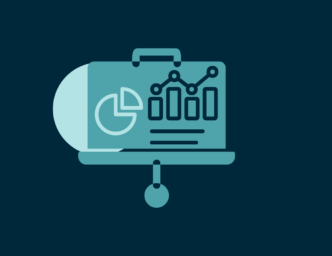A user experience designer–UX designer–is a tech role responsible for creating a user-friendly experience for the end-user of a product or service. They work with teams to understand the needs and wants of the customer and then design solutions that meet those needs. In many cases, UX designers also play an important role in the development process, working with engineers to create prototypes and to test designs.
The field of UX design is a growing job role with an estimated over 10,000 UX designers in the workforce, per Zippia. We’ll provide an overview of what a UX designer job description looks like, the skills required for the job, the average salary range, and more.
If you’re looking to hire a UX designer, these interview questions will help you screen your candidates.
What Might Be In A UX designer Job Description
As a UX designer, your job would be to design the overall user experience for digital products and websites. This might include working on the overall layout, flow, and interactivity of the product. You would also be responsible for conducting user research, testing prototypes with users, and adjusting your designs based on feedback.
When a company posts a job description for a UX designer, you might see them detail a person who can do the following on a day-to-day basis:
- Create wireframes and prototypes
- Conduct usability testing
- Research and understand customer needs and wants
- Work with teams to develop solutions
On a personality level, a job description may also look for a person with:
- A passion for solving problems and making things that people will love to use
- An understanding of user-centered design principles
- The ability to think creatively and come up with innovative solutions
- Strong communication skills, both written and verbal
- The ability to work well in a team as well as independently
Hiring managers may also mention needing a portfolio in the job description. Portfolios are necessary for UX designers–both entry-level and experienced–to show off work they’ve done before. Your portfolio will offer insights to your creativity, research capabilities, and your ability to create prototypes and wireframes–all skills we’ll talk about in just a second.
RELATED: How to Write a UX Designer Job Description
Skill requirements
The UX designer job description should also detail what skills they expect from a designer. These skills will differ based on experience in the field or experience in a UX role, but there are some general capabilities expected from a UX designer. These include:
Creativity
While creativity is crucial for any UX role, it’s essential for designers. Designers need to develop innovative solutions that meet users’ needs while also being feasible from a technical standpoint. Additionally, they need to be able to think outside the box to find new ways to improve the user experience.
Problem-solving skills
Problem-solving skills are also essential for UX designers. This position often tasked with finding ways to improve complex user flows or redesign existing features. Additionally, they need to troubleshoot any issues users might have.
User empathy
User empathy is the concept that you understand the needs, struggles, and general perspective of the users of your product. You need to put yourself in the shoes of your user and understand how they are experiencing your product. Without this, it would be difficult to design a good user experience.
Communication skills
Good communication skills are also crucial for UX designers. They need to explain their design decisions to both team members and stakeholders, and they may even have a hand in explaining changes and updates to users. Additionally, they might need to present their work to clients or give feedback to other designers.
A passion for design and technology
UX designers need to have a passion for design and technology. These designers need to be up-to-date on the latest trends both in their industry and outside of it (you can take design inspiration from all walks of business) and apply that knowledge when designing products or services.
An understanding of customer needs and wants
This ties into having user empathy. A vital part of being a good UX designer is understanding what the customer wants and desires in a product. They need to understand the user’s journey to find areas where the experience can be improved, and they need to have a way to gather those insights (whether they be through stakeholders or directly from consumers). They also need to take evidence-backed data into account when designing experiences the users want.
Ability to create prototypes and test designs
A primary role UX designers take on is the designing of the app, website, or other product. They also need to be able to test these designs. A UX designer will likely create wireframes (prototypes or blueprints) for products then also track how users experience these new prototypes. They then take those insights and make decisions on changes that need to be made to the current product.
Attention to detail
Lastly, attention to detail is crucial for designers. This is because even minor details can significantly impact the overall user experience. For example, a button placed just a few millimeters too low can be hard to press, causing frustration for users.

Tasks and responsibilities
The responsibilities of a UX designer can vary depending on the company and project, but some standard duties include:
- Researching customer needs and wants
- Designing user-friendly solutions
- Creating prototypes and testing designs
- Working with engineers to develop products
- Communicating with team members and customers about needed changes
Additionally, designers might also be responsible for managing projects or giving feedback to other designers.
Qualifications, Certifications & Degrees needed for UX Designers
In most cases, you will need at least a bachelor’s degree in design, technology, or a related field (like HCI–human-computer interaction) to be considered for a job as a UX designer. Additionally, many employers prefer candidates who have experience working in the field, so internships or entry-level jobs can be helpful.
With regards to non-college-related qualifications, some handy certifications for UX designers may include:
- Nielsen Norman Group UX’s certification
- The Google UX Design certificate
- IxDF‘s UX certification
UX designer salaries
The average base pay for a UX designer is around $77,000 per year, per Glassdoor. However, salaries can range from $55,000 to $250,000 per year, depending on experience level, location, and company size. Things like bonuses, stock options, and other benefits aren’t often included in base salary.
How do employers distinguish between junior and senior UX designers?
Junior designers typically have less experience and may not have all the skills required for the job. They may also be in the early stages of their career, whereas senior UX designers are more experienced and have a deeper understanding of user experience design.
In most cases, junior UX designers will start out as assistants to senior UX designers before eventually moving up to a more senior role. Employers will usually look for candidates with at least three years of experience working in a related field.
Other Types of UX Jobs
The UX field is expansive. Design can sometimes describe the overarching UX field, but let’s look at some other roles outside of the UX designer.
UX researcher/analyst
A UX researcher takes on the specific role of finding out what a user or customer wants or needs. They take all the data from their research and offer it to the team in charge of designing the product. This data can come from conducting A/B tests, looking at click-maps, talking to product users directly, and studying customer satisfaction surveys.
UX strategist
According to UX Planet, a UX strategist must “synthesize user research and business data to help shape the product roadmap, designs and future research activities.” So, they take information a UX researcher gives them, then they plan out a strategy for where the product goes from there. They often oversee projects and make sure things run smoothly.
UX architect
A UX architect is responsible for designing the overall user experience of a product or service. Once the customer’s wants and needs are researched, and the strategy is laid out for the team to follow, an architect helps put this plan into action with examples of how the product will change. This is done with things like sitemaps, wireframes, and prototypes.

UI designer
UI is short for user interface, which includes how a product looks. These roles work hand-in-hand with the UX team to further enhance a user’s experience with a product, but UI designers are specifically responsible for designing the look and feel of a product or service. UX designers go a layer deeper and understand how that look and feel affects how the user experiences the entire product.
You can read more about how UX designers and UI designers are overlap and differ.
Full-stack Designer
A full-stack designer has a comprehensive understanding of all aspects of the user experience and interfaces. Full-stack designers have experience with UX and UI, and they can design and build prototypes, write user stories, conduct research, and much more.
The role of a UX designer is different for different companies
The role of a UX designer can vary greatly from one company to the next. In some cases, they may be focused primarily on designing and prototyping new features. Others may be responsible for conducting user research or managing the design team.
Ultimately, it is up to the employer to decide what they want their UX designers to do. A company may also look for a “UX designer,” then it turns out they’re looking for something more specific like an analyst or project manager. However, some common skills and duties are typically required of all UX roles.
Conclusion
As you can see, a UX designer’s job description can be complex and multi-faceted. UX designers are in high demand and can make a good salary. However, the role of a UX designer is not just about making things look nice on an app.
A UX designer must understand complex data and user needs to create an effective user experience for a website, app, or other product. But one thing is for sure: as technology advances and more companies focus on creating intuitive, easy-to-use products, the demand for UX designers will continue to grow.
Check out Insight Global’s website if you’re looking for UX jobs or looking to hire a UX designer.


 by Patrick Glynn
by Patrick Glynn



 by Alexandra Woodford
by Alexandra Woodford 

